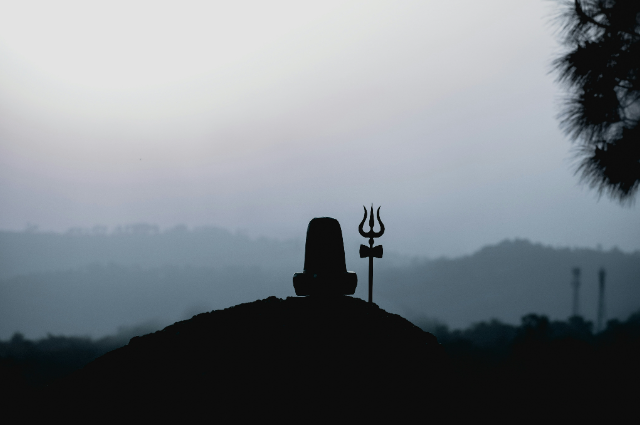
Photo by Naman Sood on Unsplash
Shaivism, one of the oldest and most profound religious traditions of India, offers a captivating insight into the roots of human civilization. Rooted in the timeless wisdom of ancient India, Shaivism comprehends a rich weaving of philosophy, spirituality and cultural practices that have shaped societies for millennia.
ORIGINS OF SHAIVISM
Shaivism traces its origin to the Indus Valley Civilization, one of the world’s earliest urban civilizations that flourished around 3300 – 1300 BCE. The remnants of this ancient culture, discovered through archaeological excavation, reveal a society deeply ingrained in spiritual practices and reverence for cosmic forces.
Inscriptions and artefacts found in the ruins of the Indus Valley cities such as Mohenjo- Daro and Harappa suggest the presence of Proto- Shaivite symbols and rituals. The prominence of the worship of the male deity, often depicted in yogic postures and adorned with horned headdresses, hints at early manifestations of Shiva, who is the ultimate destroyer of all sins or Pasa’ s, and protector of all beings as Pashupati. Shiva is also mentioned as Rudra in Rig Veda and shares an unpredictable destructive nature. He is the supreme being and the mightiest deity. Rudra suktam mentioned him as the Lord of Yajna, Mantras and medicine. He is the protector of all forces (Gods) and there is no one mightier than him.
THE PHILOSOPHY OF SHAIVISM
At the heart of Shaivism lies a profound philosophical outlook on existence and the cosmos. Central to its doctrine is the concept of Shiva, who is the manifestation of Vedic deity Rudra. Shiva sutra, the text on Yoga, written in 8th century by the great Shaivite saint Vasu Gupta , truly depicted the ultimate reality or Shiva as cit or para samvit, which is the changeless principle of all changes. It is non-relational consciousness, where, the distinction between subject and object, of Edam (this) and Aham (I) does not exist. It is the supreme self, surveying itself. The svabhava of Shiva is Vimarsha or Shakti. Thus, Shiva is revered as the supreme reality,representing the cosmic consciousness beyond form and attributes. As the destroyer, Shiva’s role transcends mere destruction; it symbolizes the dissolution of the universe to pave the way for creation and renewal.
Shiva Sutra, however, consists the fact that it was revealed to counter the effects of dualism and contains the secret doctrine revealed by Shiva himself to Vasu Gupta. This text, generally known as Shivapanisat - sangraha, is a great source of ancient wisdom, which flows abundantly through the greatest saints and scholars of mediaeval period like Vasugupta, Bhaskara, Kshema Raja, Somanand and Kallata or Kalhan.
Shiva in later ages, is often depicted in deep meditation, signifying the transcendental state of absolute being. His association with the eternal, formless aspect of existence highlights his status as the ultimate reality, beyond the limitations of time, space, and individual identity. It is the Svabhava or the very nature of ultimate reality to manifest. Abhinav Gupta, the famous teacher of Advaita Shaivagam of Kashmir school of thoughts, described creativity as the very essence of divinity. In a sloka of his Tantra Loka, he says, “If the highest Reality did not manifest in infinite variety, but cooped up within its solid, singleness, it would neither be the Highest power nor Consciousness, but like a solid jar”. Both Samkhya and Vedanta consider the purusha as niskriya or inactive. But according to the philosophy of Shaivism, Swatantrya or unimpeded sovereignty is the characteristic ‘par excellence’ of Shiva, who expresses himself through iccha Shakti (will power) which immediately transforms itself into Jnana shakti (knowledge) and kriya shakti (action) and thus He manifests the World process with the help of Maya.
Shiva's consciousness or the supreme consciousness is like an ocean. No complete textual analysis about it can be given. It is the complete journey from pure I or self consciousness to universal consciousness and from Universal consciousness to ultimate Shiva consciousness. Rightly said by Abhinav Gupta, in a sloka, ‘Upaya jalam na Shivam prokashayet’ - ‘even innumerable means cannot reveal Shiva, can a jar reveal the sun? Pondering thus, one with a lofty vision gets absorbed immediately in Shiva who is self-luminated.'
Thus, Shaivism espouses the belief in the interconnectedness of all beings and the divine nature inherent in every soul. It’s philosophical underpinnings explore the dynamic interplay between the individual self and the supreme consciousness. Emphasizing the journey of self-realization and liberation from the cycle of birth and death. Devotees of Shiva seek to connect with this supreme reality through devotion, aiming to realize the divine presence within themselves.
RITUALS AND PRACTICES
Shaivism encompasses a diverse array of rituals and practices, aimed at attaining spiritual enlightenment and fostering harmony with the cosmic order. From the fervent chanting of sacred hymns to intricate temple ceremonies and meditative contemplation, devotees engage in multifaceted expressions of devotion and reverence.
INFLUENCE ON CIVILIZATION
The influence of Shaivism extends far beyond the boundaries of ancient India, permeating the cultural landscapes of South Asia and beyond. From the majestic temples of Angkor Wat in Cambodia to the serene shrines of Bali In Indonesia, Shaivism’s legacy endures as a testament of its spiritual and cultural significance.
Moreover, Shaivism has profoundly influenced diverse fields such as art, literature, dance and music, inspiring generations of artists, poets, and scholars to explore the depths of human experience and transcendence.
In conclusion, Shaivism stands as a beacon of wisdom and enlightenment, offering timeless insights into the nature of existence and the pursuit of spiritual fulfilment. Its roots in civilization serve as a testament to the enduring quest of humanity for meaning, connection and transcendence in a world brimming with mystery and wonder, As we delve deeper into the ancient teachings of Shaivism, we uncover not only a profound spiritual tradition but also a living testament to the profound legacy of human civilization.
